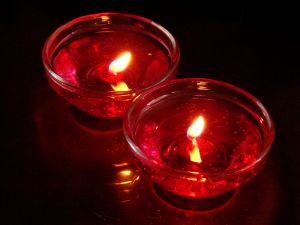 I found detailed guides to creating gel candles at Gel Candle Making.com
I found detailed guides to creating gel candles at Gel Candle Making.com
They share some useful tips and busted some myths, exaggerations and horror stories. One email in particular has been circulating and has now been deemed as an urban legend. It includes stories about toilets blowing up and exploding gel candles which seems to be a slight exaggeration. Some polar fragrance oils can separate from gel and form pockets which can then possibly flare up so using the proper fragrance oil is important.
Although candles don’t really explode, if the glass isn’t thick enough it could possibly shatter after being overheated for too long. See Making Gel Candles section on gel candle horror stories for more information.
Although Making Gel Candles guides are broken into sections, it would be a good idea to read all of them before beginning.
Section 1 is all about Gel and includes what it’s made out of and what type you need. Section 2 explains the equipment needed which is typical traditional candle making equipment but a Presto Kitchen Kettle is suggested instead of a double boiler. This is much easier anyway and also has a temperature control which is safer. I haven’t made gel candles so a new piece of equipment that looked unfamiliar was metal knitting needles or a metal spoon for stirring. Section 3 includes a little bit of information on dyes. Section 4 is about fragrances which is important because they have to be non-polar and above a certain flash point. There is a lot of useful information here including a test for polarity if you want to see if your fragrance is safe for gel. Section 5 has some information on wicks and which wicks to use. Section 6 is on embeds and includes suggestions on non-flammable items to use. Section 7 is on technical info, 8 is on product testing and 9 has a well organized safe gel check list.
It’s an informative site and a good source of information for the beginning geller.


